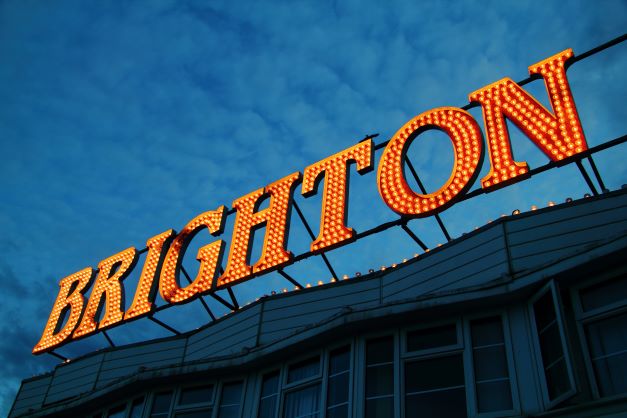Brighton is grappling with a dire drug abuse problem, with the city registering the highest usage rate for Cocaine, Ketamine, and MDMA. A recent study revealed that a staggering 20% of the city’s inhabitants are believed to have indulged in Cocaine, with an additional 10% having used MDMA. Drugs exacerbate the situation in public places such as toilets and changing rooms, rendering it a public health concern. Unfortunately, residents in certain areas of Brighton, such as Hangleton and Knoll, are too intimidated to report drug dealers to the authorities due to the fear of retaliation.
To combat the problem, Sussex Police has dismantled effective county-line drug dealing gangs in Brighton and Hove. However, the issue persists. In recent months, the following incidents have been reported:
The Christmas Drink Driving Crackdown Statistics
During the annual Christmas drink and drug driving crackdown, Sussex Police arrested 233 individuals in December, with 49 arrests occurring in the Brighton and Hove area. This represents a 10% decrease from the previous year, yet it is higher than the number arrested the year before. The campaign aimed to appeal to the public’s sense of shared responsibility in reducing the number of deaths and injuries on the roads. Sussex Police announced that they would publish the names of those convicted to raise awareness of the issue and deter others from committing similar offences.
Additionally, the police and crime commissioner, Katy Bourne, highlighted the need to increase forensic testing capacity and train more officers to use roadside tests to make roads safer for all.
Evidence of Brighton’s Drug Epidemic Continues to Grow
Brighton is one of the most important centres for drug abuse rates in the United Kingdom, with a study showing that the city has the highest usage rate for Cocaine, Ketamine, and MDMA. Data shows that 20% of residents are believed to have used Cocaine, and another 10% have used MDMA.
This problem has been exacerbated by the discovery of drugs being left in public spaces within the city, such as toilets and changing rooms. These locations are used for the consumption of Cocaine, leaving traces of the Class-A drug exposed to the public at all times.
This issue has also affected public attractions such as the i360, Madeira Drive, Brighton Train Station, Western Esplanade, and other major destinations. In response to these reports, Brighton and Hove City Council stated that they have no power to prevent this issue and that it is a police matter. They also noted that the council regularly cleans the public toilets; however, due to the extensive number of facilities, it is only possible to give each bathroom a partially thorough clean after every usage. They already work with Sussex Police to attempt to manage drug use within the city and will continue in these efforts.
Drug Dealers terrorising their neighbours
According to Conservative Councillor Dawn Barnett, residents of Hangleton and Knoll in Brighton have expressed their fear of reporting drug dealers to the authorities due to the possibility of exacerbating their situation. At a housing management panel meeting held at Hove Town Hall, Barnett stated that neighbours were “petrified” and were compelled to speak with her over the phone about the “enormous problems” with drug dealers at the “apex of Hangleton” who were causing distress to their neighbours.
Housing official Janet Dowdell acknowledged that the council’s options were limited as they required court orders to terminate tenancies and obtain injunctions. However, the residents’ trepidation makes it challenging to gather evidence. Dowdell said, “We cannot proceed to court without a substantial body of evidence. I comprehend why individuals are reticent to step forward and declare, ‘Yes, I will sign a witness statement.’ They are residing next to individuals who are engaged in drug dealing. That is precisely what will enable us to swiftly appear in court. The most compelling evidence is a statement.”
Ms Dowdell added, “We have had people stating, ‘I do not want you to engage with them.’ Thus, our hands are tied. We are then unable to inquire about their conduct and issue them with a warning.”
Despite the efforts of the police and the council, residents of Hangleton and Knoll continue to live in fear of drug dealers terrorising their community. Many have reported being intimidated and threatened by these individuals, making it difficult for them to come forward and provide evidence.
Frequent Reports of Drug Gang Take Downs
Sussex Police have frequently reported the takedown of influential county-line drug dealing gangs in Brighton and Hove. Recently, nine individuals were jailed for involvement in a well-organised conspiracy following a two-year operation by the city’s Community Investigation Team. The group, known as the HECTOR line, was found to be operating within Sussex and targeted young and vulnerable individuals through violence, exploitation, and intimidation, using them to carry out street dealing on their behalf. The police seized a vast quantity of drugs, and dozens of individuals were arrested as officers from the Community Investigations Team partnered with the Metropolitan Police to disrupt the gang’s activities.
Drug Misuse Death Capital Still Above The National Average
According to Office for National Statistics figures, twenty-four individuals succumbed to drug misuse in Brighton and Hove in 2019. Though this represents a decline from the previous year’s total of 28 deaths, it remains a persistently high figure compared to the 19 fatalities recorded five years prior. Despite this decrease, 2019 marks the second consecutive year in which the overall number of deaths has fallen from a peak of 37 in 2017. Additionally, the figures reveal that 30 deaths were “drug-related” last year.
These fatalities result from poisoning from various illegal and legal drugs, including prescription and over-the-counter medicines. The figures account for deaths from drug abuse but also encompass those resulting from accidents, suicides, and health complications arising from drug use. In the city of Brighton and Hove alone, there were 102 deaths between 2017 and 2019, at a rate of 11.7 per 100,000 inhabitants – an increase from 11.3 recorded between 2016 and 2018. Across England, the average death rate for 2017-2019 was 7.1.
Michael Garnham of Compare Rehab posits that government inaction is partially responsible for the unprecedented number of deaths across England and Wales and calls for drug policy reform, including increased investment in treatment, overdose prevention sites, and a review of the laws regarding possession offences to end criminal sanctions.
Immediate action must be taken to address this dire situation, as the human cost of drug misuse is too high to ignore. A comprehensive approach must be adopted, including more significant investment in treatment and rehabilitation programs and implementing harm reduction measures such as overdose prevention sites.
The Office for National Statistics figures serves as a sobering reminder of the devastating impact of drug misuse on individuals and communities.
Is Putting Treatment Ahead of Punishment Working?
In Brighton and Hove, the approach to addressing drug addiction has shifted from punishment to treatment. The city has implemented strategies that redirect individuals arrested for possession of heroin and crack cocaine towards assessment and rehabilitation services rather than prosecution. Additionally, community-based programs aimed at reducing drug use and criminal behaviour have been made readily available.
In April 2013, the city outlined a comprehensive set of policies and resources addressing illegal drug markets and substance abuse. This illustrates the prioritisation of addiction treatment over penalisation in Brighton and Hove.
The Brighton and Hove Recovery Services offer guidance and assistance to adults grappling with alcohol or drug dependency, as well as support for the families and caregivers of those affected.
Supporters claim the criminalisation of drug addiction is ineffective in curbing antisocial behaviour. Proponents state research has consistently demonstrated that community-based drug treatment programs can effectively reduce drug use and related criminal activity. A study by Jennifer Doleac found that expanding access to substance abuse and mental health treatment leads to decreased violence and property crime. Furthermore, Dr Nora Volkow, the director of the National Institute on Drug Abuse, has stated that incarceration can exacerbate stress and exacerbate antisocial behaviour in individuals suffering from addiction unless they have access to treatment. Moreover, traditional drug enforcement policies frequently do more harm than good by deepening drug usage, whereas providing treatment for addicts can alleviate the strain on the prison system.
Critics contend that viewing drug addiction as a medical ailment rather than a criminal offence sends a wrong message to society and could result in a proliferation of drug use and addiction. They also assert that community-based treatment is not always efficacious and that some drug users may not be willing or able to seek assistance. Furthermore, some argue that treating addiction as a medical concern can be costly and that the government should instead focus on preventing drug use in the first place.
They posit that providing treatment to drug users could be viewed as enabling their addiction and that harsher penalties and criminalisation can deter potential drug users. Additionally, they suggest that treating addiction as a medical concern could lead to a lack of accountability for drug-related crimes, as individuals may not be held responsible for their actions while under the influence of drugs.
Brighton and Hove continue to be the South East’s epicentre for drug misuse deaths, with 24 people perishing last year alone. Misuse refers to deaths involving illegal drugs or resulting from drug abuse or dependence. This figure represents a decrease from 28 deaths in 2018. However, city leaders maintain that the figure remains “stubbornly high” compared to the 19 fatalities recorded five years prior. Despite this, 2019 marks the second consecutive year in which the total has decreased from a high of 37 in 2017. The Office for National Statistics figures also reveal 30 “drug-related” deaths last year. These deaths are poisoning by various illegal and legal drugs, including prescription and over-the-counter medicines. The figures account for deaths from drug abuse but also include accidents, suicides, and health complications arising from drug use.
In Brighton and Hove, there were 102 deaths between 2017 and 2019, at a rate of 11.7 per 100,000 people – an increase from 11.3 in 2016-18. Across England, the average death rate for 2017-19 was 7.1, suggesting that Brighton’s lenient approach may warrant re-evaluation.






